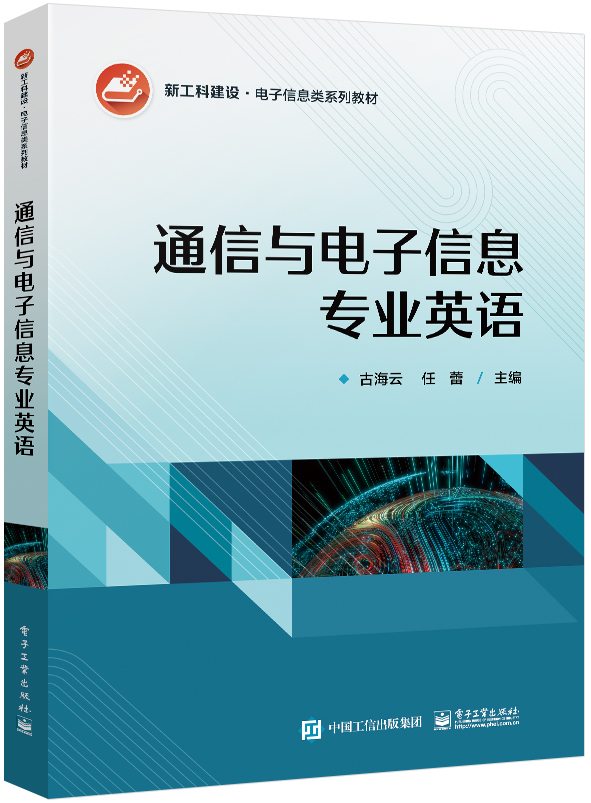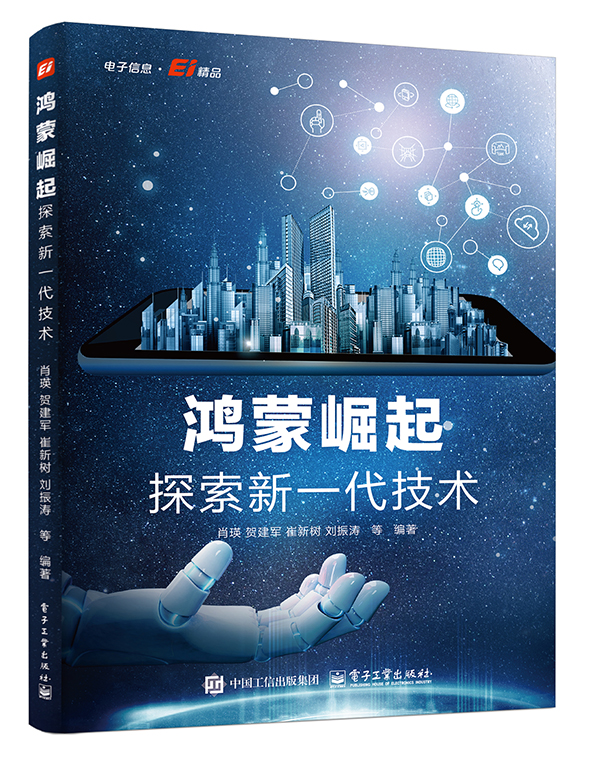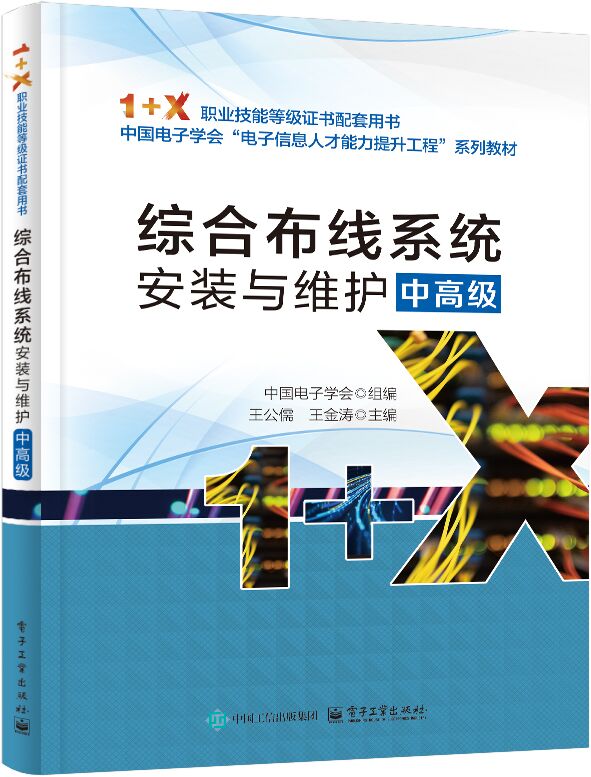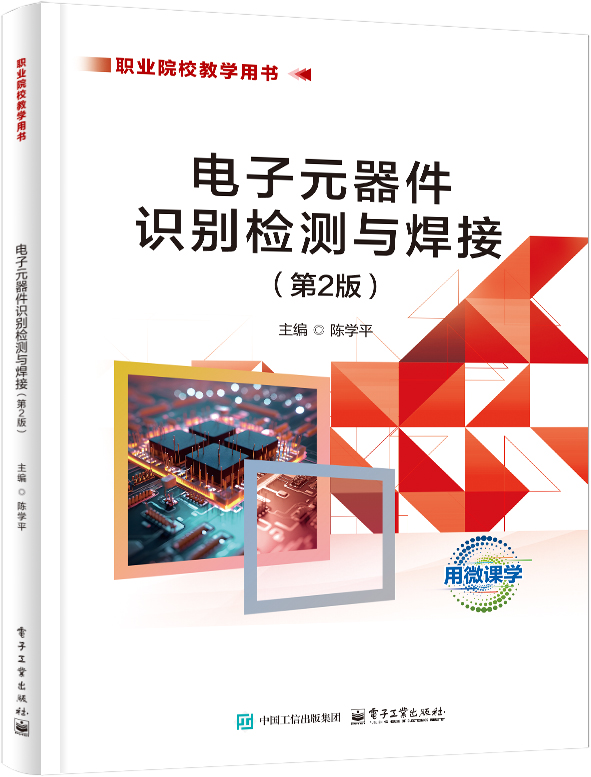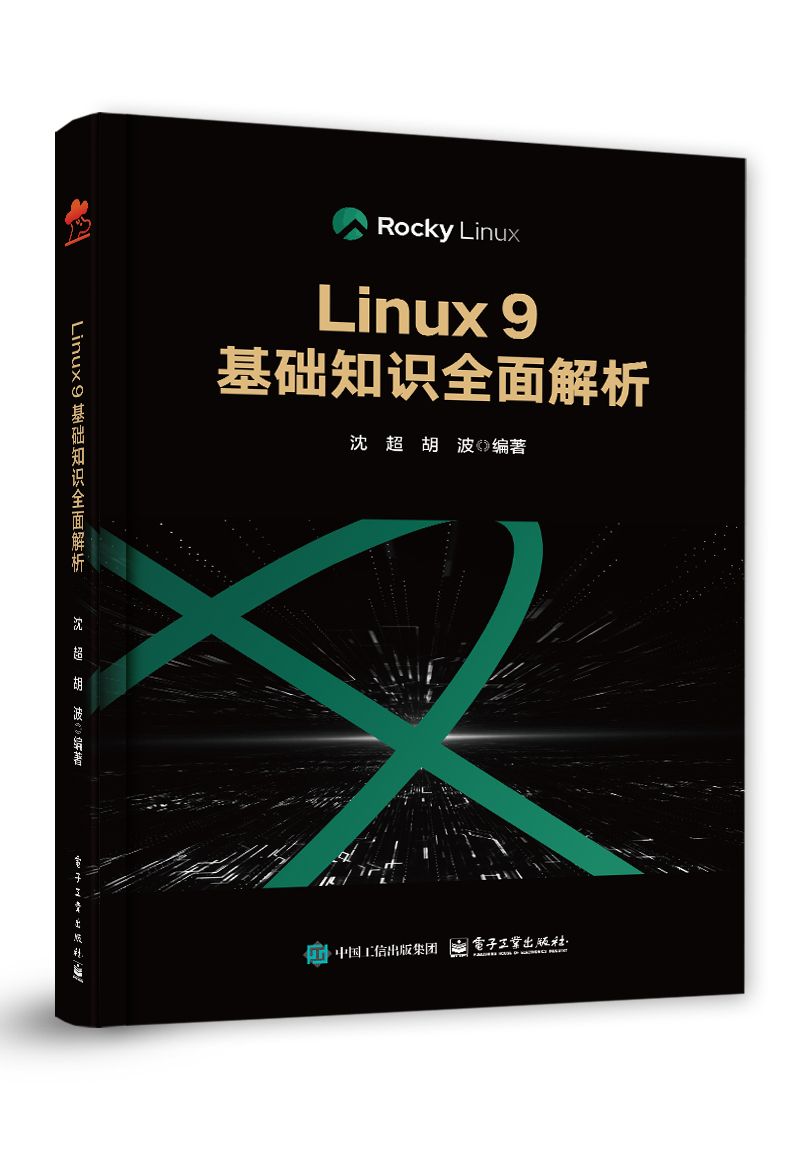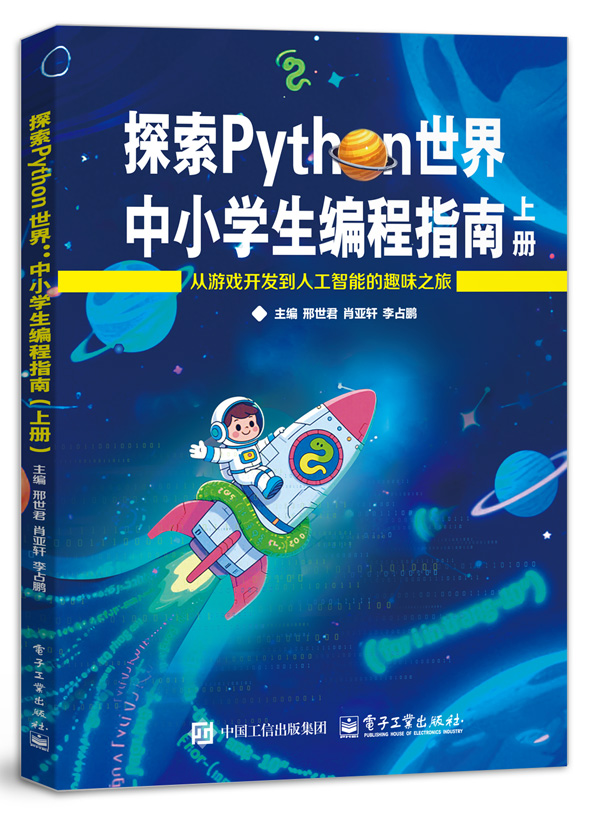通信与电子信息专业英语
作 译 者:古海云
出 版 日 期:2024-02-01
书 代 号:G0471650
I S B N:9787121471650
图书简介:
本书内容涵盖电子、通信、电信及计算机等相关专业方向,具有较强的先进性和实用性。本书内容分为两部分,共18个单元。专业阅读部分包括14个单元:电路原理、嵌入式系统、集成电路、信号与系统、数字信号处理、数字图像处理、通信原理、移动通信、光通信、电信网络、电磁学、微波通信、计算科学基础、新技术趋势。实践指导部分包括4个单元:专业学习方法、研究方法、求职指导及沟通技巧。本书提供配套的电子课件PPT、词汇表、习题参考答案、教学大纲、教学指南等。本书可作为电子工程、通信工程、电信工程等专业大学本(专)科生的科技英语和专业英语课程教学用书,也可供相关领域的工程技术人员学习参考。
-
配 套 资 源
-
图 书 内 容
内容简介
本书内容涵盖电子、通信、电信及计算机等相关专业方向,具有较强的先进性和实用性。本书内容分为两部分,共18个单元。专业阅读部分包括14个单元:电路原理、嵌入式系统、集成电路、信号与系统、数字信号处理、数字图像处理、通信原理、移动通信、光通信、电信网络、电磁学、微波通信、计算科学基础、新技术趋势。实践指导部分包括4个单元:专业学习方法、研究方法、求职指导及沟通技巧。本书提供配套的电子课件PPT、词汇表、习题参考答案、教学大纲、教学指南等。本书可作为电子工程、通信工程、电信工程等专业大学本(专)科生的科技英语和专业英语课程教学用书,也可供相关领域的工程技术人员学习参考。图书详情
ISBN:9787121471650开 本:16(185*260)页 数:288字 数:599本书目录
PartⅠ Academic Reading Unit 1 Electric Circuits 2 1.1 Circuit Elements 2 1.2 Basic Laws 4 1.2.1 Ohm’s Law 4 1.2.2 Kirchhoff’s Laws 6 1.3 Circuit Analysis 8 1.3.1 Nodal Analysis 8 1.3.2 Mesh Analysis 10 Exercises 12 Unit 2 Embedded Systems 15 2.1 Introduction to Embedded Systems 15 2.1.1 Early Forms of Embedded Systems 15 2.1.2 Birth and Evolution of Modern Embedded Systems 16 2.1.3 Contemporary Embedded Systems 18 2.2 Structure of an Embedded System 21 2.2.1 Hardware Components 22 2.2.2 Software Components 23 2.3 Microprocessors Versus Microcontrollers 26 2.3.1 Microprocessor Units 26 2.3.2 Microcontroller Units 27 2.3.3 RISC Versus CISC and RISC Architectures 28 2.3.4 Programmer and Hardware Models 28 Exercises 30 Unit 3 Integrated Circuits 33 3.1 Introduction 33 3.2 PN Junction and Diode 38 3.3 Transistor 43 3.3.1 BJT 43 3.3.2 FET 44 3.4 FPGA 48 3.4.1 FPGA Versus Microcontroller 48 3.4.2 What Is a Programmable Gate Array? 48 3.4.3 How Do You Program an FPGA? 49 Exercises 53 Unit 4 Signals and Systems 55 4.1 Introduction to Signals 55 4.2 Frequency Response of LTI Systems 59 4.3 Sampling Theorem 63 Exercises 67 Unit 5 Digital Signal Processing 70 5.1 Introduction to Digital Signal Processing 70 5.2 Structures for Discrete-Time Systems 73 5.3 Filter Design Techniques 77 Exercises 81 Unit 6 Digital Image Processing 84 6.1 Components of an Image Processing System 84 6.2 Examples of Fields That Use Digital Image Processing 87 6.3 Introduction to Pattern Recognition 91 Exercises 94 Unit 7 Principles of Communications 97 7.1 Electrical Communication Systems 97 7.2 Modulation and Multiplexing 101 7.2.1 Baseband Transmission 101 7.2.2 Broadband Transmission 102 7.2.3 Multiplexing 104 7.3 Digital Communication Techniques 106 7.3.1 Data Conversion 106 7.3.2 Elements of a Digital Communication System 109 Exercises 112 Unit 8 Mobile Communication 115 8.1 From 1G to 5G 115 8.1.1 A Brief History of Wireless Technologies 115 8.1.2 1G — First Generation Mobile Communication System 115 8.1.3 2G — Second Generation Mobile Communication System 116 8.1.4 3G — Third Generation Mobile Communication System 117 8.1.5 4G — Fourth Generation Mobile Communication System 118 8.1.6 5G — Fifth Generation Mobile Communication System 118 8.1.7 Summary 119 8.2 Mobile Networks 120 8.2.1 Main Components 121 8.2.2 Radio Access Network 122 8.2.3 Mobile Core 123 Exercises 127 Unit 9 Optical Communication 129 9.1 Optical Communication Systems 129 9.1.1 Light Wave Communication in Free Space 129 9.1.2 Fiber-Optic Communication System 131 9.1.3 Applications of Fiber Optics 132 9.2 Passive Optical Networks 134 9.2.1 The PON Concept 134 9.2.2 PON Technologies 135 Exercises 138 Unit 10 Telecommunication Networks 141 10.1 A Telephone Network 141 10.1.1 Basic Telephony 141 10.1.2 Telephone System 143 10.2 Internet Telephony 148 10.2.1 VoIP Fundamentals 148 10.2.2 Internet Phone Systems 150 Exercises 152 Unit 11 Electromagnetics 156 11.1 Introduction of Electromagnetics 156 11.1.1 Importance of Electromagnetics 156 11.1.2 A Brief History of Electromagnetics 157 11.1.3 Applications of Electromagnetism 159 11.2 Engineering Electromagnetics and Waves 164 11.2.1 Lumped Versus Distributed Electrical Circuits 164 11.2.2 Electromagnetic Components 166 11.2.3 Maxwell’s Equations and Electromagnetic Waves 167 Exercises 171 Unit 12 Microwave Communication 174 12.1 Microwave Concepts 174 12.1.1 Microwave Frequencies and Bands 174 12.1.2 Benefits of Microwaves 175 12.1.3 Disadvantages of Microwaves 176 12.2 Microwave Communication Systems 179 12.2.1 Transmitters 179 12.2.2 Receivers 181 12.2.3 Transmission Lines 183 12.2.4 Antennas 184 Exercises 185 Unit 13 Basics of Computer Science 188 13.1 What Is a Computer? 188 13.1.1 Computer Hardware 189 13.1.2 Computer Software 191 13.1.3 Categories of Computers 193 13.2 Computer Networks 197 13.2.1 Network Hardware 197 13.2.2 Network Software 202 13.2.3 Internet Security 205 Exercises 212 Unit 14 New Technology Trends 215 14.1 Promising Opportunities for Artificial Intelligence 215 14.1.1 AI for Augmentation 215 14.1.2 AI Agents on Their Own 218 14.2 Ten Predictions on the Future of Machine Learning 221 14.3 Big Data 226 14.3.1 Definitions of Big Data 226 14.3.2 Big Data Management Architecture 229 14.3.3 Performance Matters 231 14.3.4 Traditional and Advanced Analytics 233 14.4 Quantum Internet 236 14.4.1 Introduction 236 14.4.2 Preliminaries 237 14.4.3 Quantum Internet Functionalities 241 14.4.4 Possible Applications 244 14.4.5 Future Directions 246 Exercises 251 PartⅡ Practical Guidance Unit 15 Learning Skills 255 Exercises 259 Unit 16 Research Skills 261 Exercises 264 Unit 17 Careers in ECE 265 Exercises 271 Unit 18 Communication Skills 272 Exercises 275 References 277展开前 言
在信息科技日新月异的时代,工程师已经成为一个全球性的职业,需要与国内外同行进行英语交流。能够用专业英语清晰地读写、解释技术和商业文件,并能够将其理解的工程概念有效地传达给同行、主管和公众,是工程师和专业技术人员的必备技能。专业英语课程的学习和训练将培养工科大学生阅读和翻译专业英语文献的能力、专业英语写作能力、专业英语交流能力和基本的专业科研能力,以提高学生在全球领域的求职竞争力。 本书内容分为两部分。第一部分是Academic Reading,共包括14个单元,分别是Electric Circuits、Embedded Systems、Integrated Circuits、Signals and Systems、Digital Signal Processing、Digital Image Processing、Principles of Communications、Mobile Communication、Optical Communication、Telecommunication Networks、Electromagnetics、Microwave Communication、Basics of Computer Science、New Technology Trends,涵盖了电子、通信和计算机等相关专业方向。每个单元由课文、词汇、注释、习题4个部分组成。课文选材广泛,既包括专业基础内容,也包括最新的研究热点;词汇部分按文中出现的顺序列出相关专业术语,并尽量保持术语在文中的固定搭配形式,便于学生更好地掌握术语的含义和用法;注释部分包括课文中的特色句型,并配有翻译;习题部分提供多种形式的练习,包括专业词汇释义、英汉互译、专业材料阅读总结和实用语法,力求学以致用。 第二部分是Practical Guidance,共包括4个单元,分别是Learning Skills、Research Skills、 Careers in ECE、Communication Skills,旨在培养学生的学习能力、科研能力、求职能力和沟通能力。每个单元包括相关主题的实用指导与建议,以及针对性训练。 本书可作为电子工程、通信工程、电信工程等专业大学本(专)科生的科技英语和专业英语课程教学用书。本书能够满足大多数高校32~48学时的教学计划安排,教师可根据学生的专业方向和课程的学时适当选取教学内容。本书提供配套的电子课件PPT、词汇表、习题参考答案等,请登录华信教育资源网(www.hxedu.com.cn)注册后免费下载,也可联系本书编辑(wangxq@ phei.com.cn,010-88254113)索取。教学大纲、教学指南,请发送电子邮件至作者(271435904@qq.com)索取。 本书由多年担任专业英语课和专业双语课、全英语课教学的教师编写。由古海云主持制定编写大纲,并对全书进行统稿,古海云和任蕾担任主编。其中,Unit 1~3、Unit 7~13、Unit 15~18由古海云编写,Unit 4~6和Unit 14由任蕾编写。 工程师是一个需要终向学习的职业,随着新技术的不断涌现,我们的学习、工作和生活方式也都在与时俱进。“授之以鱼,不如授之以渔”,希望本书在能力培养方面做出的努力对读者有所助益。 编 者展开作者简介
古海云,工学博士,毕业于东南大学微电子学与固体电子学专业,曾赴美、英、日等国访学进修。长期从事通信、电子、计算机、微电子等专业的全英教学工作,在专业英语方面具有丰富的教学和应用经验。 -
样 章 试 读
-
图 书 评 价 我要评论

